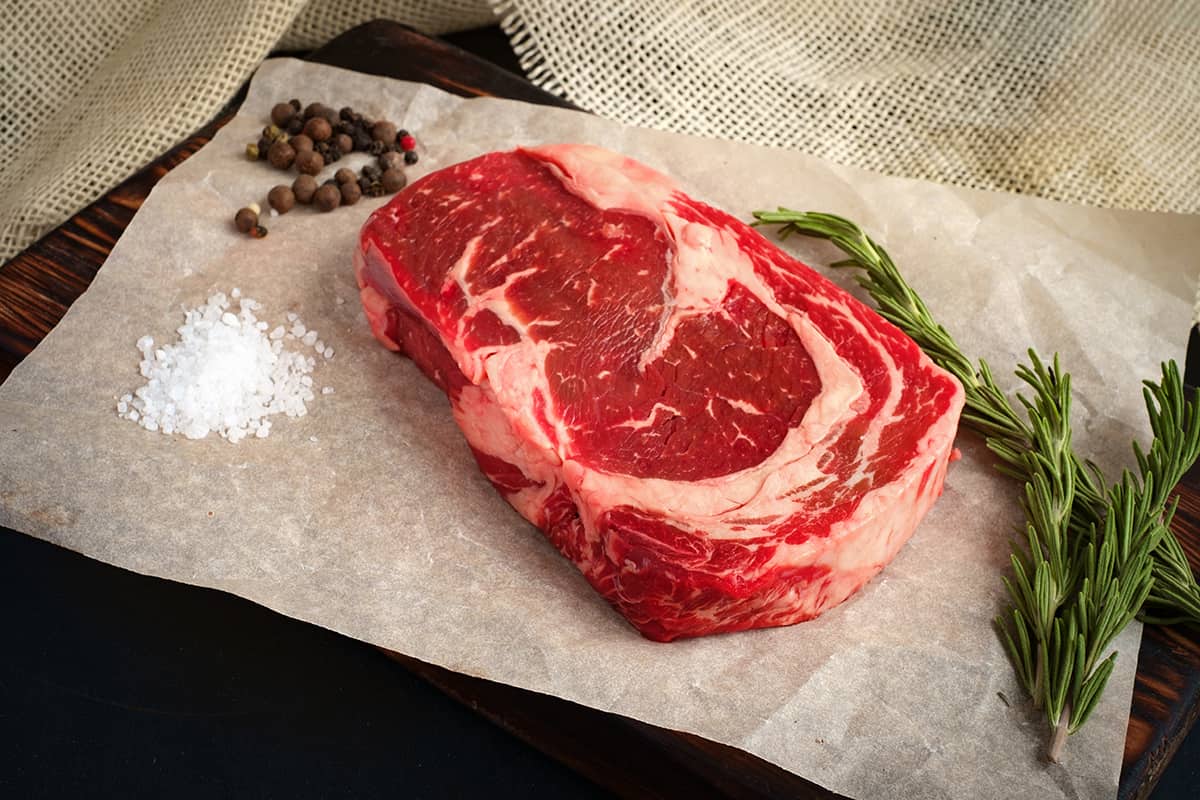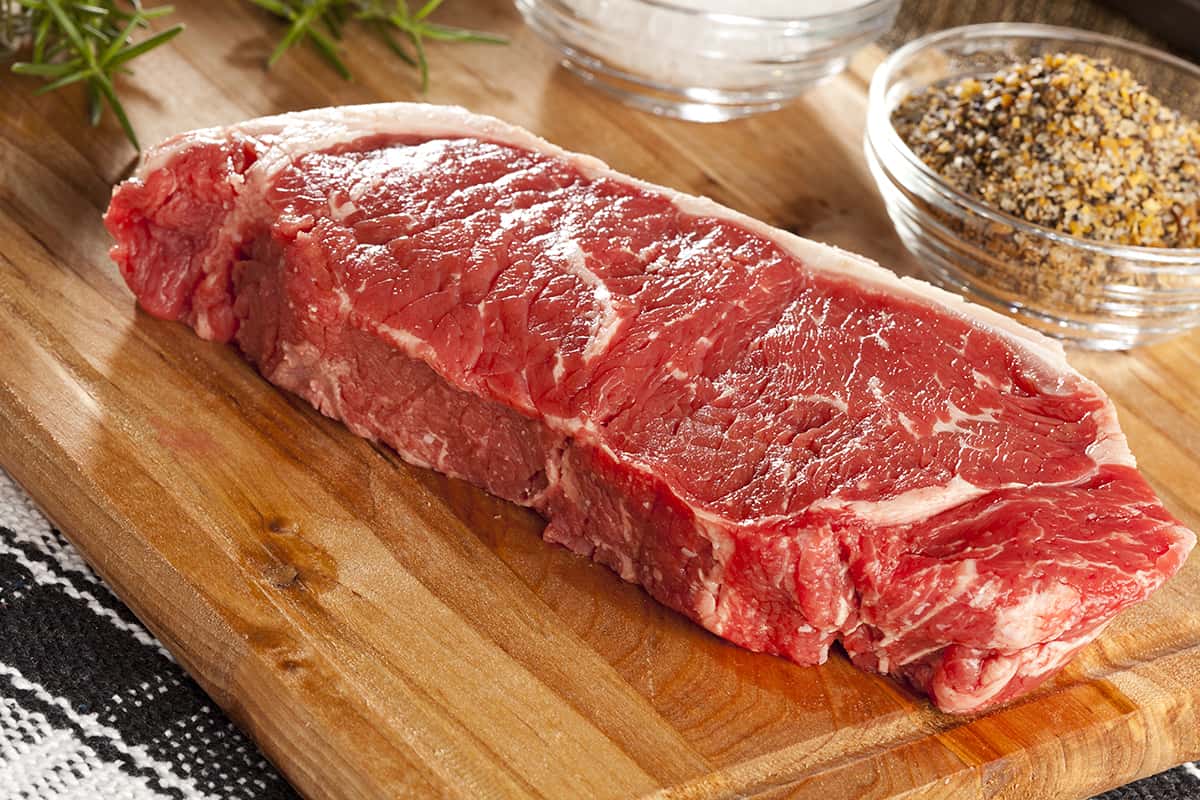Not all cuts of steak are similar to cook. Some have bone and muscles; others may have some fat content that needs a longer cooking time. Sous vide is ideal for cooking any steak, but the cooking time or the water temperature may vary.
Nothing beats the quality of steak prepared in sous vide. Steaks are challenging to cook properly with other methods of cooking. You need to be careful of the temperature and time to make sure the steak is tender and juicy from the inside.
This is where sous vide becomes helpful. It’s a technique of vacuum cooking. The steak is sealed in a packet and it is kept in heating water. The sous vide technique keeps the water at a consistent temperature.
Sous vide does not involve any guesswork like other methods of cooking. You don’t have to worry about the precision of time for each side of the steak. Whether you like your steak completely done or half done, sous vide allows you to cook your protein to perfection.
This article will discuss the best cuts of steaks for sous vide. We already know that sous vide is an excellent way to make perfect restaurant-style steaks. But are there any cuts that are more suitable for sous vide?
Which Cuts are Suitable for Sous Vide?
Steaks are easy to cook but gaining perfect results each time is difficult. Too many things count. The cooking temperature, method of cooking, and type of cut make all the difference.
Not all steaks are cooked at the same temperature. Type of cut, whether it has bone or muscles, and the marbling on meat should be considered while selecting the cooking time or temperature.
The truth is that you can cook any cut in sous vide to perfection. Yes, the cooking time and temperature should be changed with different amounts. So consider this a complete guide to help you cook different cuts with the model.
Filet Mignon

One of the best cuts for sous vide is fillet mignon or beef tenderloin. It’s relatively lean and easy to cook. due to its lovely texture and look, fillet mignon is a bit expensive as well, but nothing suits better for a fancy dinner
How to Cook Fillet Mignon In Sous Vide
To cook Filet Mignon in sous vide, you need to keep the water temperature between 128-135 degrees for two and a half to three hours.
The cooking time and temperature can be increased or reduced depending on what texture you prefer.
Here is a detailed description:
- Rare:128 degrees F for
- Medium-Rare:128-134 degrees F
- Medium:135-144 degrees F
- Well done: 145-156 degrees F
How Long Should you Cook Filet Mignon in Sous Vide?
The time depends on how well done or medium you like your steak and its thickness.
For one inch thick steak, one hour is enough. You can keep increasing the time.
- For 1.5″ thick steak: 1.5 hours
- 2″ thick steak: three hours
- 2.5″ thick steak: 3.5-4 hours.
Ribeye Steak

It’s a beautiful steak often preferred due to its beauty and texture. Ribeye steak, also called, is taken from the primal section of rib. It may come with the bone, and You can also remove the bone.
The cut looks beautiful on the plate and has beautiful fat lines that enhance the flavor of the meat. As the fat melt, it gives a rich taste to your steak. Here is how to adjust the temperature for Ribeye steak:
- Rare: 120-128 degrees F
- Medium Rare: 129-135 degrees F
- Medium: 135- 140 degrees
- Fully done: 140-150 degrees
How Long Can You cook Ribeye Steak?
- 1″ steak piece: 40-50 minutes
- 1.5″ Thick Ribeye Steak: 1 hour
T-bone Steak

T-bone is another great steak to cook in sous vide with perfection. It’s the cut from the beef’s front short loin and contains a New York strip and a smaller chunk of tenderloin. The t-shaped bone cuts the meat portions.
The cut has its fair share of marbling, making the steak juicer and tasty. The cut is considered a premium one and costs a bit high due to its perfect look and delicious meat.
Here is the cooking time for T-bone steak
- Rare: 125 degrees F
- Medium Rare: 128-130 degrees F
- Medium: 130-135 degrees F
- Well done: 135-140 degrees F
Cooking Time for T-bone steak
A T-bone steak is usually 1.25 to 2 inches thick. It can take ⅕-3 hours depending on how well done you prefer your steak.
New York Strips

The New York strip, also called the short loin, is located behind the cow’s rib. It’s the front thigh section of meat and has a chewy texture. Due to the muscle content in this cut, it has a stronger meaty flavor.
If a New York strip comes with a bone, it is Kansas City Steak. As we have just mentioned, the t-bone steak is the New York strip with the tenderloin meat.
The meat has slight marbling and muscle content. It has a rich and delicious taste.
- Rare: 120-128 degrees F
- Medium Rare:129-134 degrees
- Medium:135-145 degrees F
- Well Done: 145-150 degrees F
For How Long New York Strips Should be Cooked in Sous Vide?
New York Strip comes with a thickness of between 1 to ½ inches thick. You can leave it in a water bath for
Rare 1 -1.5 hours and leave it inside if you need a full done for 3 hours.
Sirloin Steak

Sirloin steak is expensive if you are ordering in a restaurant, but it’s less expensive than many other cuts at home. It’s pink and juicy, meant without any bone. As there is no bone and less fat, Sirloin steak does not take long to cook.
Cooking Temperature:
- Rare: 125-130 degrees F
- Medium rare: 130-135 degrees F
- Medium: 135-140 Degrees
- Fully done: 145 degrees
How Long Sirloin Steak Should be Cooked?
If it is top sirloin, the thickness is under 1 ½ inch. For medium-rare, you need to cook the steak for 1 hour. You can leave it for an extra half hour if you prefer it fully done. Here is the chart:
- I inch steak: 1 hour
- 1.5 inches steak: 1.5 hour
- Two inches steak: 2 hours.
However, steak cut from this area varies in tenderness and flavor. Top sirloin is the most expensive cut and is easy to cook. If your steak has too many muscles, add a few minutes, but overall, the cooking time remains the same.
Flank Steak

Flank steak is an inexpensive cut, but that does not mean it’s less delicious. If cooked to perfection, flank steak can be very tender and juicy. Taste is enhanced with proper seasoning.
- Rare: 120-125 degrees F
- Medium Rare: 125-129 degrees
- Medium: 130-140 degrees
- Fully done: 140-145 degrees F
How Long Should You Cook the Flank in Sous Vide?
For a 1.5-inch thick steak, you can leave it in the water bath for up to 1.5 hours. 2 Hours gives perfect tender meat as all the connective tissues break down easily.
Frequently Asked Questions
Does Sous Vide Make Restaurant Style Steak?
Yes, the meat is cooked to perfection due to the precise temperature control. Another reason for a perfectly cooked steak in sous vide is that it is difficult to overcook the meat.
A common problem with making steak is that it is easy to overcook. Meat becomes dry and chewy from the inside. And if you cook for too short, the raw center puts you off like nothing else.
With sous vide, you can’t go wrong with the temperature. Even if you have chosen a bit less temperature, it won’t ruin your steak. All it takes is a few extra minutes.
Do Sous Vide Steak Need Resting?
Sous vide steak does not need resting. You can shift them to a searing pan. Searing gives a charred and crispy exterior to your steak. Make sure you sear on high flame for no more than a minute.
Can You Sous Vide Frozen Steaks?

Yes, you can sous vide frozen steak as well. It will need some extra time to defrost. You can add 50% of the cooking time to the actual time if you are cooking frozen steak.
Marinating frozen steaks can be a problem. You can solve it by marinating them before freezing them. It allows you to shift the steak directly to the sealed bag for cooking.
Can You Freeze Sous Vide Steaks?
Yes, you can leave the perfectly cooked steak on a plate for some time. Once it is at room temperature, wrap them into a foil or plastic bag, and you can freeze them for a long time.
Next time you feel like serving the steak, take out the frozen steak and defrost in sous vide or anyway and serve as you like. You can sear the steak right before serving.
Final Words
If you like your steak perfectly cooked without any color or loss of flavors, you should cook it sous vide. Sous vide gives perfect results each time and never disappoints you.
Yes, it takes a bit more time than other cooking methods, but the flavors are more intense, and the texture is rich. Meat is more tender and juicy, and you don’t have to worry about the perfect time or temperature as the temperature controller handles it for you.






